A natural bond
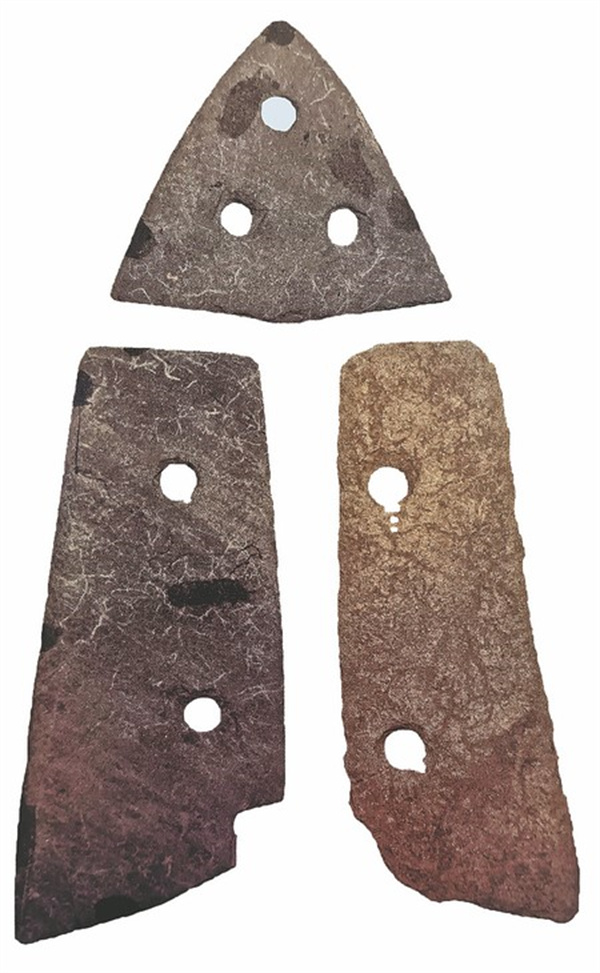
Treasures of the Liangzhu site: assembled stone plowshare. CHINA DAILY
Water has not only enabled the construction of a city but also provided the glue for Liangzhu to become a cohesive society, Zhao Xu reports.
Does water have memory? Some scientists suggest it does while others deem it a wild proposition. But for Wang Ningyuan, who has been working at the Neolithic archaeological site of Liangzhu for the past 23 years, there is little argument that it is water that has helped to prevent the memory of an ancient civilization from disintegrating, and allowed people like him a precious glimpse into its bygone glory.
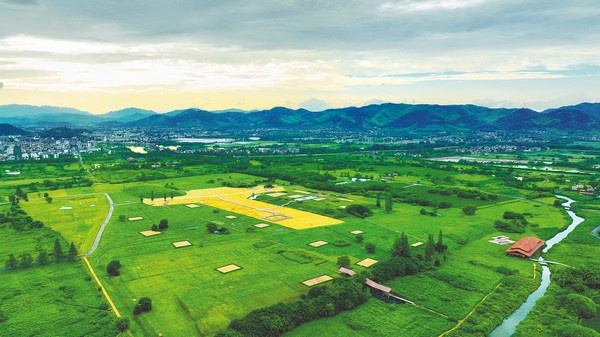
The site of the palatial complex (some suggest that they could be temples of worship) is Liangzhu's center of power and belief. The river in the lower right corner is where giant logs and discarded jade materials and lacquerware — pointing to the existence of various workshops — have been found. CHINA DAILY
Between 2015 and 2017, Wang, together with his colleagues from the Zhejiang Provincial Institute of Cultural Relics and Archaeology, conducted excavations on the site of an ancient river course. Five millennia ago, that river was running right along the eastern fringe of Liangzhu's palatial complex, the heart of Liangzhu City, which in turn functioned as "the center of power and belief of an early regional state", to quote UNESCO, who put the Archaeological Ruins of Liangzhu City on its World Heritage List in 2019.
Today, the river still exists, but the complex, which Wang believes to be "temples of worship" for the people of Liangzhu, who had developed their own unified belief system, had long been reduced to a rammed-earth platform shaped roughly like a trapezoidal prism. With its lower base measuring about 630 meters from east to west, and 450 meters from north to south, the platform supports three earth mounds, on top of which the edifices are believed to have been built.
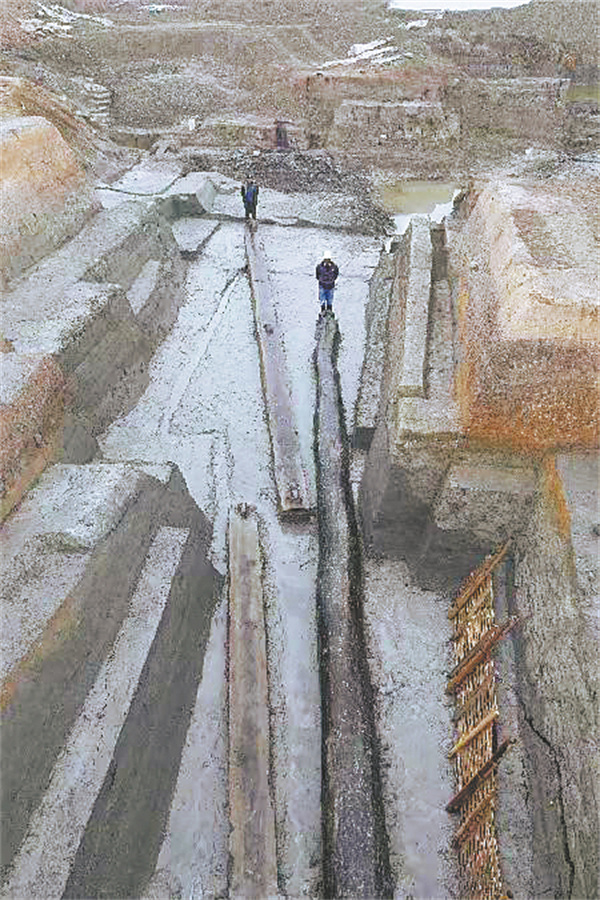
The site of the palatial complex (some suggest that they could be temples of worship) is Liangzhu's center of power and belief. The river in the lower right corner is where giant logs and discarded jade materials and lacquerware — pointing to the existence of various workshops — have been found. CHINA DAILY
Between 2015 and 2017, Wang, together with his colleagues from the Zhejiang Provincial Institute of Cultural Relics and Archaeology, conducted excavations on the site of an ancient river course. Five millennia ago, that river was running right along the eastern fringe of Liangzhu's palatial complex, the heart of Liangzhu City, which in turn functioned as "the center of power and belief of an early regional state", to quote UNESCO, who put the Archaeological Ruins of Liangzhu City on its World Heritage List in 2019.
Today, the river still exists, but the complex, which Wang believes to be "temples of worship" for the people of Liangzhu, who had developed their own unified belief system, had long been reduced to a rammed-earth platform shaped roughly like a trapezoidal prism. With its lower base measuring about 630 meters from east to west, and 450 meters from north to south, the platform supports three earth mounds, on top of which the edifices are believed to have been built.
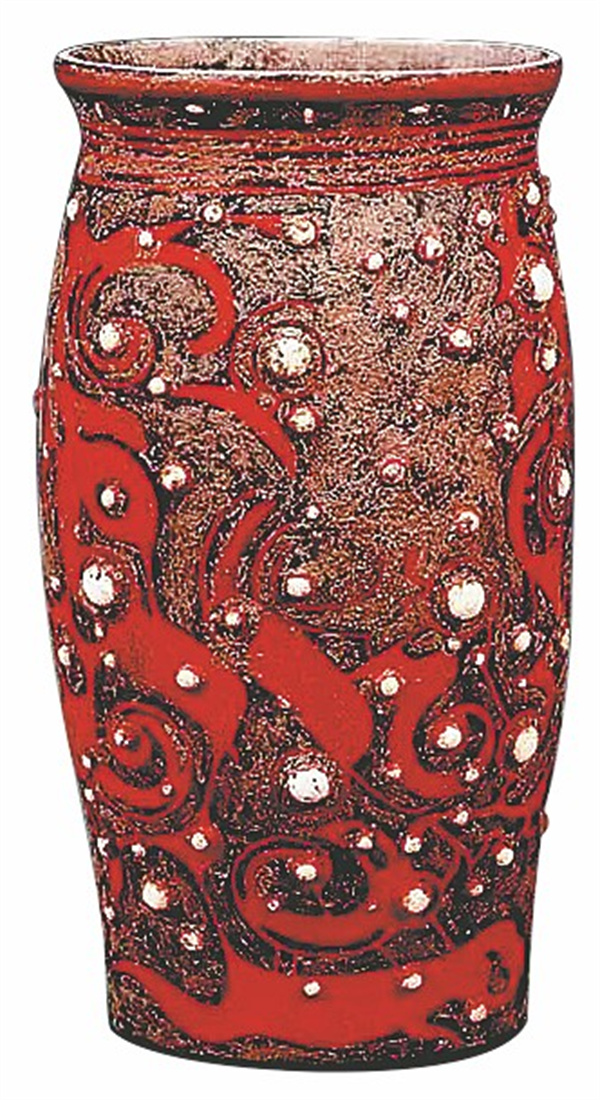
Treasures of the Liangzhu site: a reproduced lacquer cup embedded with jade beads. CHINA DAILY
Village people
Two things are worth noting about the inner city wall. First, on each its four sides were two water gates, making sure the waterways could run uninterrupted from the foot of the mountains, or elsewhere, right into the heart of the city several kilometers away.
Second, about 5 meters high, the wall featured a flat top about 20 meters wide. Judging by what has been found there, it appears that it served as an elevated area upon which people built their houses, a natural conclusion, given the fact that Liangzhu City was effectively built on watery lowland.
Elsewhere, people were not that lucky. They had to find a way to protect their dwellings from the daily erosion of water. One of the solutions was the stilt house, which can still be found today in many parts of world, most notably in southern China and Southeast Asia.
"Stilts are either poles, rods or pillars that are driven into the ground to support a building, allowing it to stand at a distance above that ground," says Wang. "This structural approach was also seen with Liangzhu's granaries, for apparent reasons."
Sometimes, though, the stilts were not enough to keep their floors dry, so Liangzhu people piled earth to build what Wang considers mini versions of the platform upon which the palatial complex was built.
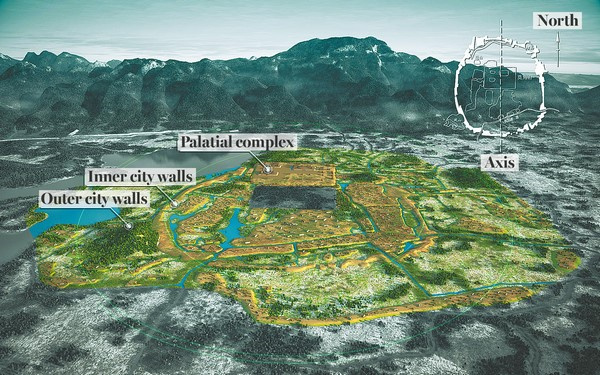
A reconstruction of Liangzhu City, with the palatial complex at the center, surrounded by inner and outer city walls. CHINA DAILY
"We believe that each mini-platform was the base of a small abode that could accommodate a family of two to four people. Very often, seven to 10 such platforms would be lined up in proximity with one another to form a settlement or village," says Wang. "And this village would be separated from a neighboring village by a distance of between 500 and 1,000 meters."
But why didn't the Liangzhu people build bigger platforms for larger houses? The answer lies in the surrounding paddy fields, maintained on a daily basis by the people who lived atop the earthen platforms.
"The relatively low crop yield of the time means that even feeding 20 to 30 people must have required a large field. If a platform big enough for 100 people to live on had been built, then those 100 people would have had to maintain a paddy field many times bigger," continues Wang. "That's where the problem would arise: to walk back and forth from their base to the far edge of that field several kilometers away would have been too time-consuming and tiring."
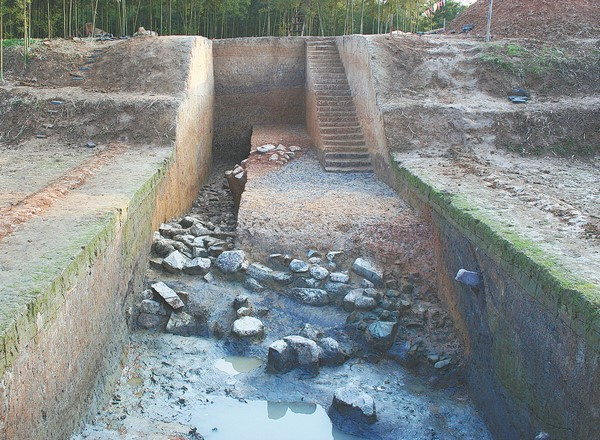
The stone foundation of the inner city walls. CHINA DAILY
By dividing big communities into smaller ones, and by surrounding each family with their own fields, the Liangzhu people had not only made the land easily accessible to its cultivators, but also created a socioeconomic norm.
"Liangzhu people's embrace of agriculture enabled the Liangzhu economy to make the transition from a primitive form of collectivism, often associated with the life of hunter-gatherers, to family-based private ownership. Every Liangzhu family was likely to have their own allotment," says Wang.
"It's no coincidence that the local farming families today are given their own share of land by the government. What better way to motivate people?"
According to Wang, this arrangement lasted from the beginning of Liangzhu civilization in around 3300 BC, through to its end 1,000 years later. Over this prolonged period of time, it was adopted not only by those living within the 100-million-square-meter area directly covered by Liangzhu's giant water system, but also by those who lived in the lower reaches of the Yangtze River and the area surrounding Taihu Lake — the realm of the Liangzhu civilization.
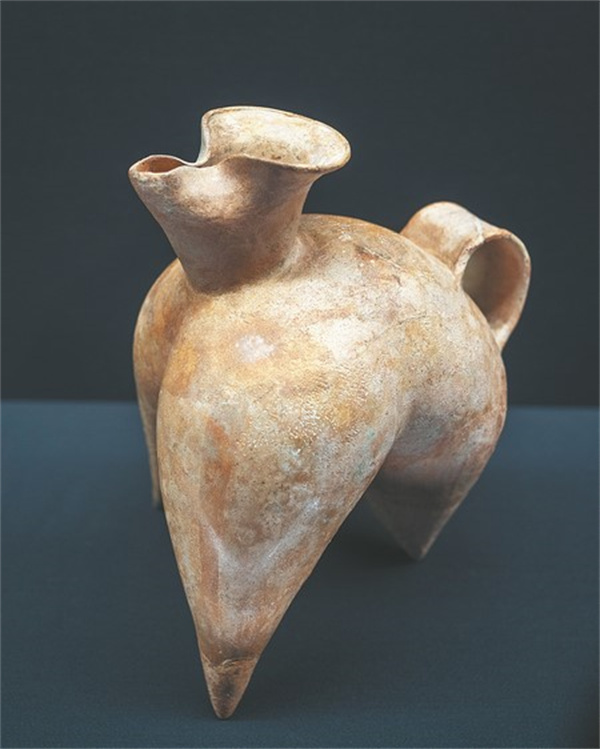
A pottery vessel, a treasure of the Liangzhu site. CHINA DAILY
The rows of earth platforms remind Wang of the rows of identical-looking houses seen everywhere in rural Zhejiang province today, whose capital city, Hangzhou, is where the Liangzhu ruins are located. With the wooden abodes they had once supported long gone, these platforms, measuring about 100 square meters each, amount to small islands of memory, all that's left of those who once lived there, in houses with a floor space of about 20 square meters, and buried there, in the underground pits dug out on both sides of each abode.
"These people were full-time peasants who, through their hard, skilled labor produced enough food to free others from the field," says Wang. "The majority of the newly created labor force took up arts and crafts, producing everything from pottery to lacquerware and jade items, the latter allowing the Liangzhu people to decorate themselves and express a faith to which they all seemed to have subscribed."
The craftspeople lived mostly inside the walled city. In the same ancient river course running along the palatial complex, where giant logs have been unearthed, archaeologists found discarded jade materials and lacquerware, among other things.
"Rivers were both transportation routes and dumping sites, where people living in the vicinity threw their household waste and other unwanted stuff. What we've found there pointed to the existence of various workshops along their banks," says Wang.
In sharp contrast, no paddy fields and earth platforms — except for the one propping up the palatial complex — have been discovered inside the city, pointing to a clear urban-rural divide.
"The fact that the two city walls are dated to a period slightly later than the one assigned to the water system and the palace is proof of the gradual formation of delineated spaces with different functions," he says.
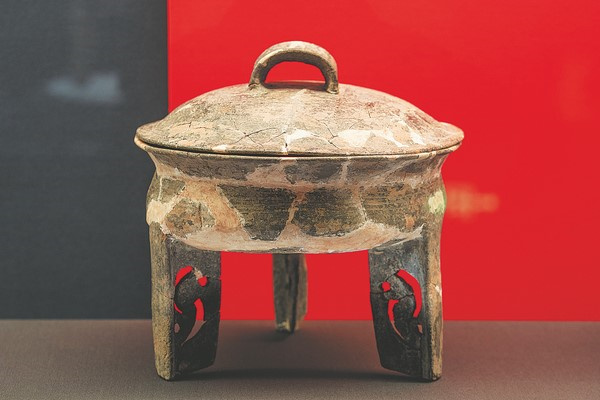
A pottery vessel, a treasure of the Liangzhu site. CHINA DAILY
Established order
For Chen Tongbin, one of the main people responsible for drafting the bidding documents to help the Liangzhu ruins seek world heritage status, a city is as much a social concept as it is an architectural one.
"A city will only emerge when the population density has reached a certain level. And population density is a strong indicator of societal development," she says. "Any society capable of building what the Liangzhu people built must be a highly structured and stratified one, operating within their own framework and sense of order. In fact, the presence of that order and the construction of the city was mutually beneficial, since the city itself, through its urban planning and layout, had asserted that order for all of its inhabitants."
In other words, the Liangzhu rulers, through the concentric design made up of the palatial complex and the two city walls, created a physical, visual and emotional center of power for those on whom they would impose their will and ambition, and to exert their cultural and political influence.
"We talk about the Liangzhu civilization as an early form of statehood, but the Liangzhu civilization covers a vast area measuring 36,500 square kilometers, with what we call the Archaeological Ruins of Liangzhu City occupying only a southern spot of that area," says Wang. "So, there's also this other scenario, whereby a number of political entities coexisted in this area. Each of them may have a certain degree of independence from each other, but they were clearly engaged in close exchanges that allowed them to exhibit the same societal and cultural traits, and to harbor the same beliefs.
"The chances are, that no matter how dispersed they were, they all looked to Liangzhu City's temple of worship (the palatial complex) as the spiritual and political core that bound them all together."
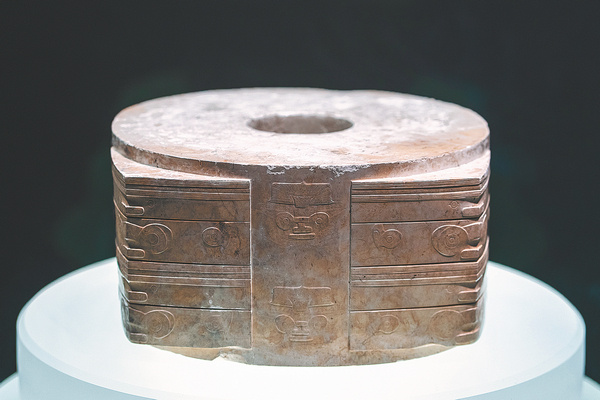
Cong, a type of ritual jade believed to have embodied the unified belief of Liangzhu people. CHINA DAILY
In that sense, the Liangzhu civilization is not unlike ancient Greece, which comprised a collection of culturally and linguistically related city-states and territories. While the lands of ancient Greece were officially unified between 336 BC and 323 BC under the rule of Alexander the Great, in 221 BC, the land of Liangzhu became part of the unified empire of Qin (221-206 BC).
Both developed a love-hate relationship with water, they fought it, tamed it, celebrated it, romanced it, and, in some ways, worshiped it. For their part, the ancient Greeks — and later the Romans who had come under their influence — left behind extensive aqueducts and extravagant baths built with stone. Vitruvius, the celebrated Roman architect and engineer from the 1st century BC, stated that marshy areas must be avoided when the site of a city is chosen.
Vitruvius was certainly right in noting the potential harm of infectious, waterborne diseases, but he might feel compelled to at least rethink his conclusion if he'd known the story of Liangzhu, told by ingeniously constructed dams and embankments, and by wooden boats, oars and piers preserved in their watery graves.
"The Liangzhu society was an extremely mild one. Little sign of violence has been discovered at the Liangzhu sites, except for the few that had existed on its borders, where it may have come to clash with other societies or cultures," says Wang.
"It's fair to say that water had brought exchange, which brought cohesion, the ultimate platform on which the Liangzhu civilization was built."


